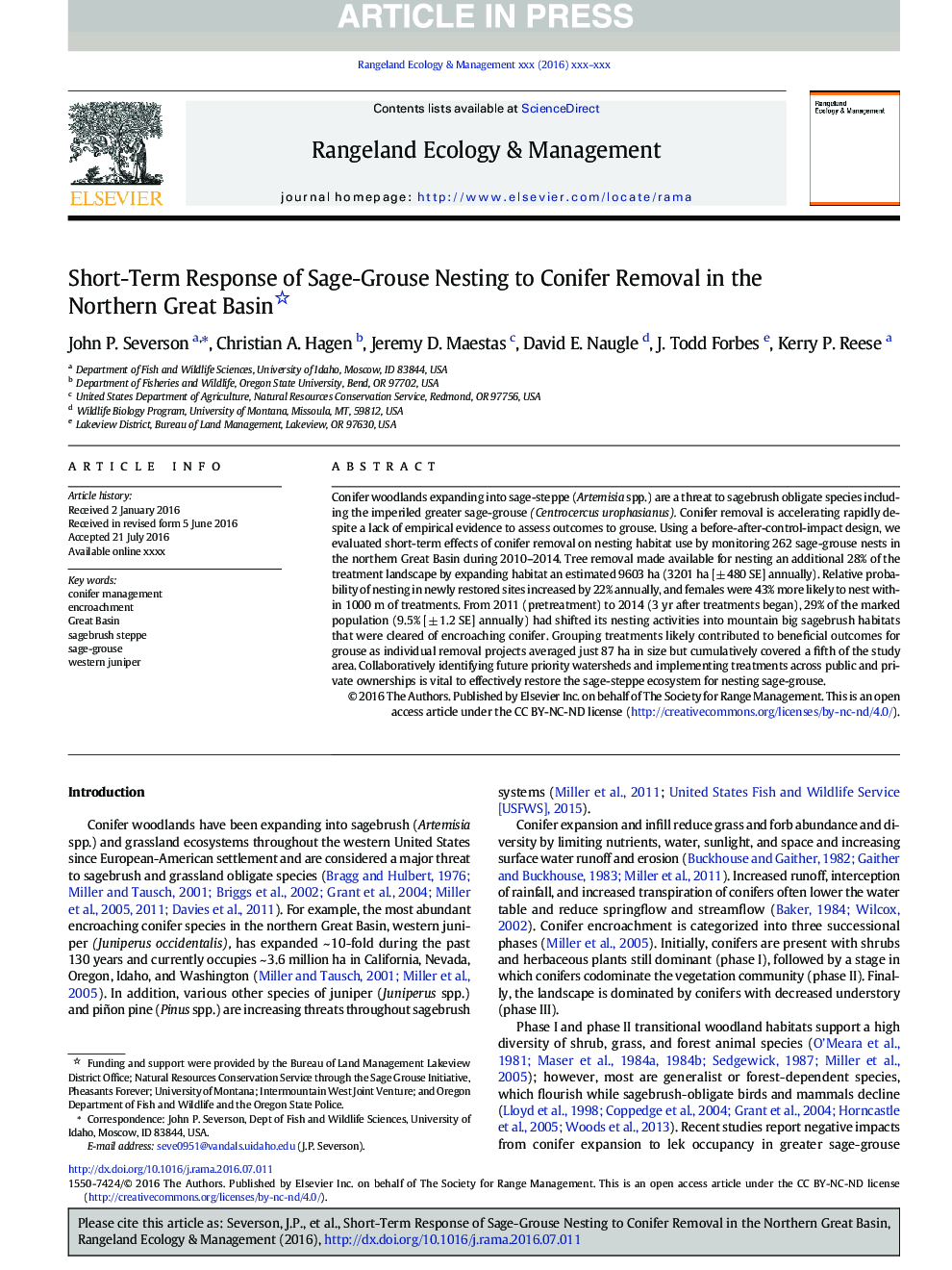| Article ID | Journal | Published Year | Pages | File Type |
|---|---|---|---|---|
| 5745298 | Rangeland Ecology & Management | 2017 | 9 Pages |
Abstract
Conifer woodlands expanding into sage-steppe (Artemisia spp.) are a threat to sagebrush obligate species including the imperiled greater sage-grouse (Centrocercus urophasianus). Conifer removal is accelerating rapidly despite a lack of empirical evidence to assess outcomes to grouse. Using a before-after-control-impact design, we evaluated short-term effects of conifer removal on nesting habitat use by monitoring 262 sage-grouse nests in the northern Great Basin during 2010-2014. Tree removal made available for nesting an additional 28% of the treatment landscape by expanding habitat an estimated 9603 ha (3201 ha [± 480 SE] annually). Relative probability of nesting in newly restored sites increased by 22% annually, and females were 43% more likely to nest within 1000 m of treatments. From 2011 (pretreatment) to 2014 (3 yr after treatments began), 29% of the marked population (9.5% [± 1.2 SE] annually) had shifted its nesting activities into mountain big sagebrush habitats that were cleared of encroaching conifer. Grouping treatments likely contributed to beneficial outcomes for grouse as individual removal projects averaged just 87 ha in size but cumulatively covered a fifth of the study area. Collaboratively identifying future priority watersheds and implementing treatments across public and private ownerships is vital to effectively restore the sage-steppe ecosystem for nesting sage-grouse.
Related Topics
Life Sciences
Agricultural and Biological Sciences
Agricultural and Biological Sciences (General)
Authors
John P. Severson, Christian A. Hagen, Jeremy D. Maestas, David E. Naugle, J. Todd Forbes, Kerry P. Reese,
